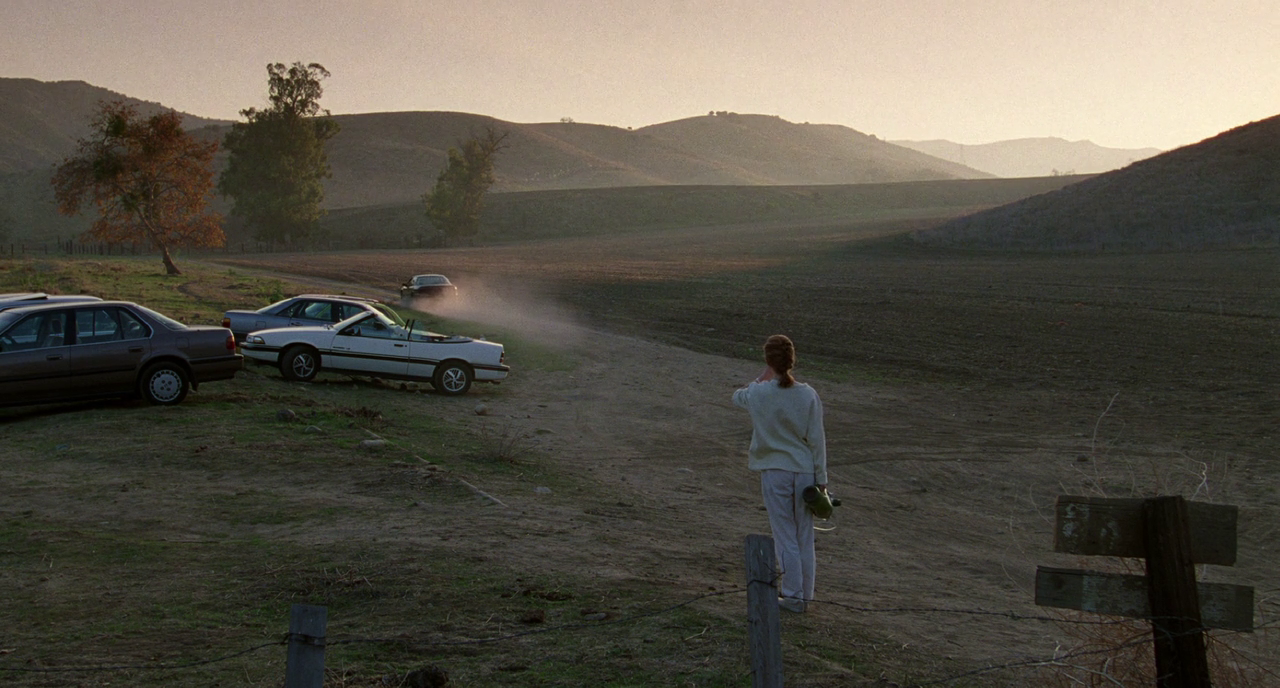Debuting in the heart of the 90s, Todd Haynes’ Safe (1995) stunned critics and audiences alike, findings its eventual place in film history after being voted the best film of the 1990s in the 1999 Village Voice film poll. On the outside, Safe may appear simply a drama, elevated by Julianne Moore’s phenomenal (and breakthrough) performance, but within, thanks to the meticulously expressive hand of Todd Haynes, the film operates on multiple levels. Stretching its metaphorical meanings from a methodical allegory for the AIDS crisis in the 80s to acting as the cinematic definition of the feeling of anxiety, Safe is bursting at the seams with symptomatic meaning.
Through the gracefulness of Hayne’s creative talent the film is able to convey these themes and ideas without appearing as preachy or overbearing. Haynes reserves an exuberance of explicit meaning and opts for simplicity and subtlety to drive the core message to viewers. With this he achieves (at least by my definition) narrative perfection; the ability to craft a gripping and investing story while lacing it with poignant social commentary which bleeds from every frame.

It’s easy to tell Haynes put his heart and soul into this feature, composing each and every shot for maximum emotional reach, aesthetic beauty and symbolic prowess; he frames Moore (as Carol before Carol) in ways that act as an extension of her isolation within her materialistic lifestyle, working in complete control of every facet of the frame. Moore is shown endlessly trapped within the confines of her designer San Fernando villa, shot hovering on the peripheries (even in her own garden, Haynes positions her lost amongst her own jungle, a slow zoom out wholly encapsulating these emotions). Sound design here also plays an enormous part in capturing the ambiguities of Carol’s disease, the perpetual whir of electricity detailing her deterioration and superimposing the sound of silence during the film’s brooding first act. Thematically, Safe (to me at least) defines the feeling of anxiety; the hopelessness of an explanation and an understanding from others which is epitomised by Carol’s final relocation to Wrenwood, and to a greater extent, the enigmatic Lester (pictured on the poster).
Safe remains inexplicably ambiguous. Audiences formal expectations are toyed with even from the film’s theatrical release poster. Contrasting the insanely polished look and feel of the film with a gritty, and in many ways trashy (colour balance is off, text is scattered and raw), poster, Haynes and co. attempt to mask the film’s prejudices. If you saw that poster and said you expected a first-class drama run solely by Julianne Moore which pokes hints as self-help culture and speaks volume and the materialistic state of Western society, you’d be lying.
